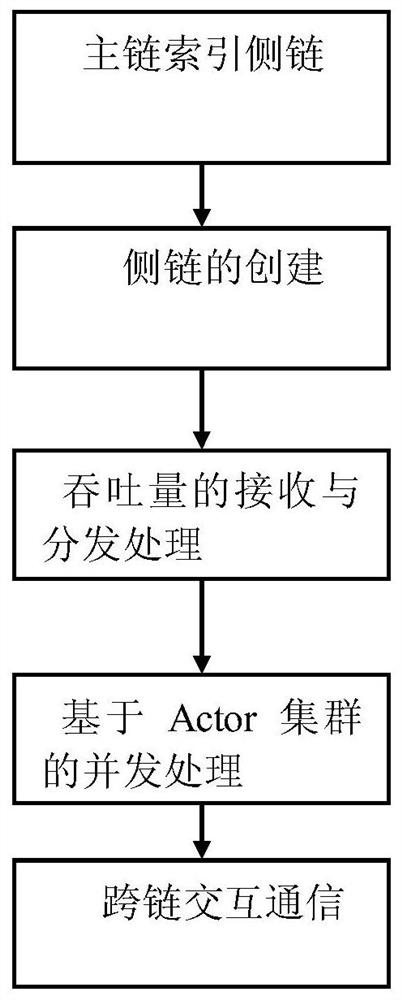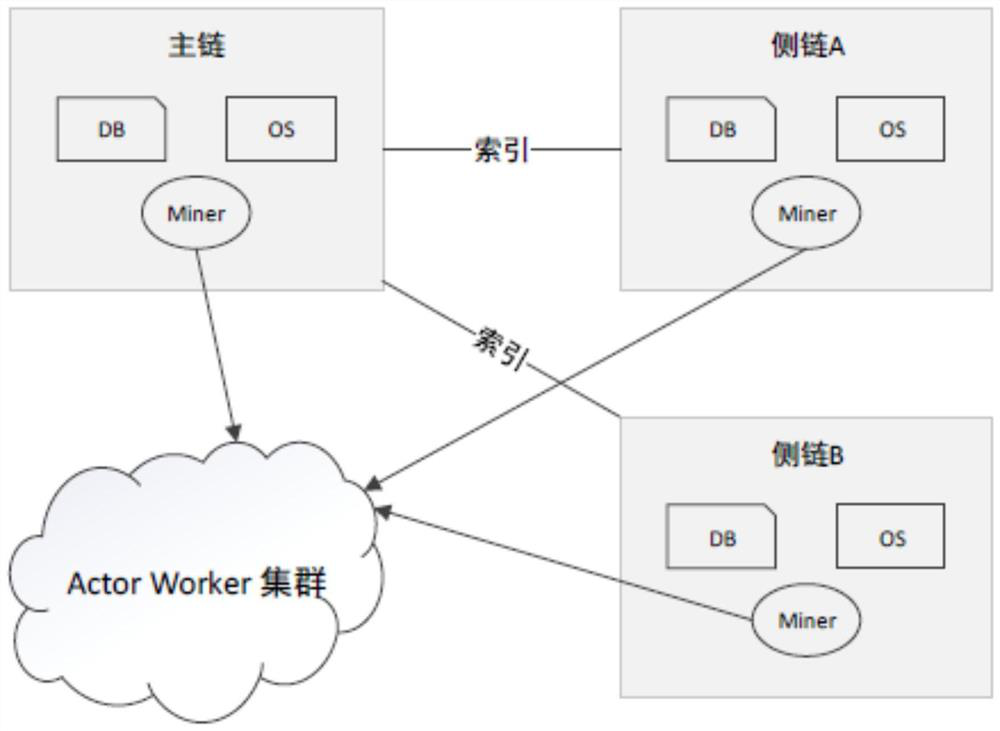A method for constructing a blockchain architecture with one main chain and multiple side chains
A block chain and side chain technology, applied in digital transmission systems, data exchange networks, electrical components, etc., can solve problems affecting the normal transmission of production data, congestion, slow network data transmission, etc., and achieve the effect of solving network congestion
- Summary
- Abstract
- Description
- Claims
- Application Information
AI Technical Summary
Problems solved by technology
Method used
Image
Examples
Embodiment 1
[0032] In order to achieve the above purpose, the embodiment of the present invention proposes a method for constructing a block chain architecture with one main chain and multiple side chains, see figure 1 , the build method includes the following steps:
[0033] 101: Establish index information between the main chain and the initial side chain based on the block Merkle Tree, access Merkle Tree and state Merkle Tree;
[0034] 102: When the access amount exceeds the maximum limit of the initial side chain access amount, create the initial side chain;
[0035] 103: Receiving and distribution processing of miner nodes;
[0036] 104: Actor cluster-based concurrent processing;
[0037] 105: Build an adaptation module between side chains of the same layer for cross-chain interactive communication at the same layer; between side chains of different layers, provide guarantees for side chains with slow block generation through the main chain, and realize cross-chain interaction of d...
Embodiment 2
[0058] The scheme in embodiment 1 is further introduced below in conjunction with specific calculation formulas and examples, see the following description for details:
[0059] The embodiment of the present invention mainly tests the parallel processing performance and scalability of the side chain from two aspects. The first is the efficiency experiment of parallel access processing based on the side chain, and the parallel access processing process based on the side chain, and according to this The specific implementation steps of the experiment design process, including:
[0060] 201: In the experiment, a fixed number of random accesses will be generated for each contract, and the time required for the system to process all the accesses is calculated through the program timer. Each set of access data is repeated 10 times, and the average time is calculated. From this, the comprehensive access throughput of the blockchain system is calculated;
[0061] Among them, both the...
Embodiment 3
[0090] The experiment assigns 4000 accesses to each side chain, and adjusts the number of side chains from 2 to 16. There are a total of 8 sets of comparative experiments, and each set of experiments runs 10 times.
[0091] In a stand-alone environment, when the number of side chains does not exceed 6, as the number of side chains increases, the access throughput of the system will increase, reaching a maximum of 4568 accesses per second. Once the number of side chains exceeds 6, the access processing capacity of the system will start slide. In the cluster environment, when the number of side chains is less than 8, the access processing capacity of the system will increase steadily, reaching a maximum of 5848 accesses per second. When the number of side chains exceeds 8, the access throughput will basically remain stable as the number of side chains increases. There is a slight drop. In contrast, when the number of side chains is relatively small, the access throughput that c...
PUM
 Login to View More
Login to View More Abstract
Description
Claims
Application Information
 Login to View More
Login to View More - R&D
- Intellectual Property
- Life Sciences
- Materials
- Tech Scout
- Unparalleled Data Quality
- Higher Quality Content
- 60% Fewer Hallucinations
Browse by: Latest US Patents, China's latest patents, Technical Efficacy Thesaurus, Application Domain, Technology Topic, Popular Technical Reports.
© 2025 PatSnap. All rights reserved.Legal|Privacy policy|Modern Slavery Act Transparency Statement|Sitemap|About US| Contact US: help@patsnap.com



